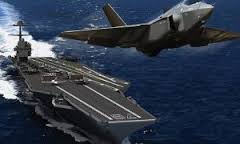
Breaking News
 Why Dual Engine Failure Changes Everything -- Louisville Crash Update
Why Dual Engine Failure Changes Everything -- Louisville Crash Update
 Transforming Storage Shelf / Workbench - Small Space Organization
Transforming Storage Shelf / Workbench - Small Space Organization
 Our 3-Step Strategy for a Stress-Free Pantry
Our 3-Step Strategy for a Stress-Free Pantry
 BEHIND THE DEEP STATE | The War on Farms
BEHIND THE DEEP STATE | The War on Farms
Top Tech News
 HUGE 32kWh LiFePO4 DIY Battery w/ 628Ah Cells! 90 Minute Build
HUGE 32kWh LiFePO4 DIY Battery w/ 628Ah Cells! 90 Minute Build
 What Has Bitcoin Become 17 Years After Satoshi Nakamoto Published The Whitepaper?
What Has Bitcoin Become 17 Years After Satoshi Nakamoto Published The Whitepaper?
 Japan just injected artificial blood into a human. No blood type needed. No refrigeration.
Japan just injected artificial blood into a human. No blood type needed. No refrigeration.
 The 6 Best LLM Tools To Run Models Locally
The 6 Best LLM Tools To Run Models Locally
 Testing My First Sodium-Ion Solar Battery
Testing My First Sodium-Ion Solar Battery
 A man once paralyzed from the waist down now stands on his own, not with machines or wires,...
A man once paralyzed from the waist down now stands on his own, not with machines or wires,...
 Review: Thumb-sized thermal camera turns your phone into a smart tool
Review: Thumb-sized thermal camera turns your phone into a smart tool
 Army To Bring Nuclear Microreactors To Its Bases By 2028
Army To Bring Nuclear Microreactors To Its Bases By 2028
 Nissan Says It's On Track For Solid-State Batteries That Double EV Range By 2028
Nissan Says It's On Track For Solid-State Batteries That Double EV Range By 2028
U.S. Navy Converts Seawater Into Jet Fuel And Successfully Flies Aircraft

This could change everything when it comes to refueling out on the open sea.

Credit: General Atomics
Researchers at the United States Naval Research Laboratory have developed an innovative method for extracting carbon dioxide and producing hydrogen to create one thing: hydrocarbon liquid fuel. The fuel powers jet engines without generating additional harmful byproducts.
The research began over a decade ago and was powered by the need for an alternative method of refueling U.S. Navy vessels underway, which can be costly when considering time, logistics, and potential national security dangers.
Dr. Heather Willauer, the lead investigator for the research lab, said,
"The potential payoff is the ability to produce JP-5 fuel stock at sea reducing the logistics tail on fuel delivery with no environmental burden and increasing the Navy's energy security and independence."
It's a complicated process, but the two-step procedure has up to a 60 percent conversion rate from carbon dioxide to hydrogen and they have decreased the production of unwanted methane from 97 percent to 25 percent.

Credit: Anon HQ
To test the effectiveness of the fuel, the researchers used a radio-controlled scale-model replica of a World War II aircraft that is complete with an internal combustion engine. The experiment went well, and hopefully the results translate equally into a real jet.
The majority of U.S. Navy vessels today require oil-based fuels, which can be tough to deal with because of price fluctuations and potential shortages.
Vice Admiral Philip Cullom said this of the technology:
"It's a huge milestone for us. We are in very challenging times where we really do have to think in pretty innovative ways to look at how we create energy, how we value energy and how we consume it. We need to challenge the results of the assumptions that are the result of the last six decades of constant access to cheap, unlimited amounts of fuel."

 Carbon based computers that run on iron
Carbon based computers that run on iron

